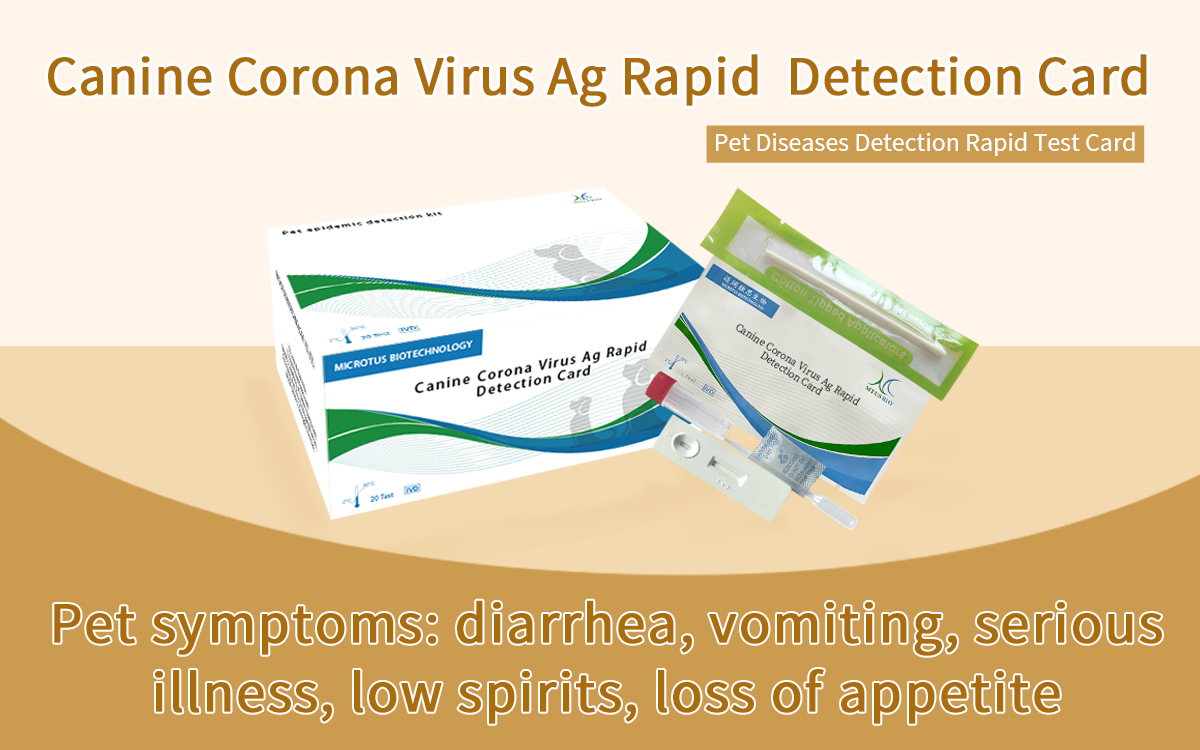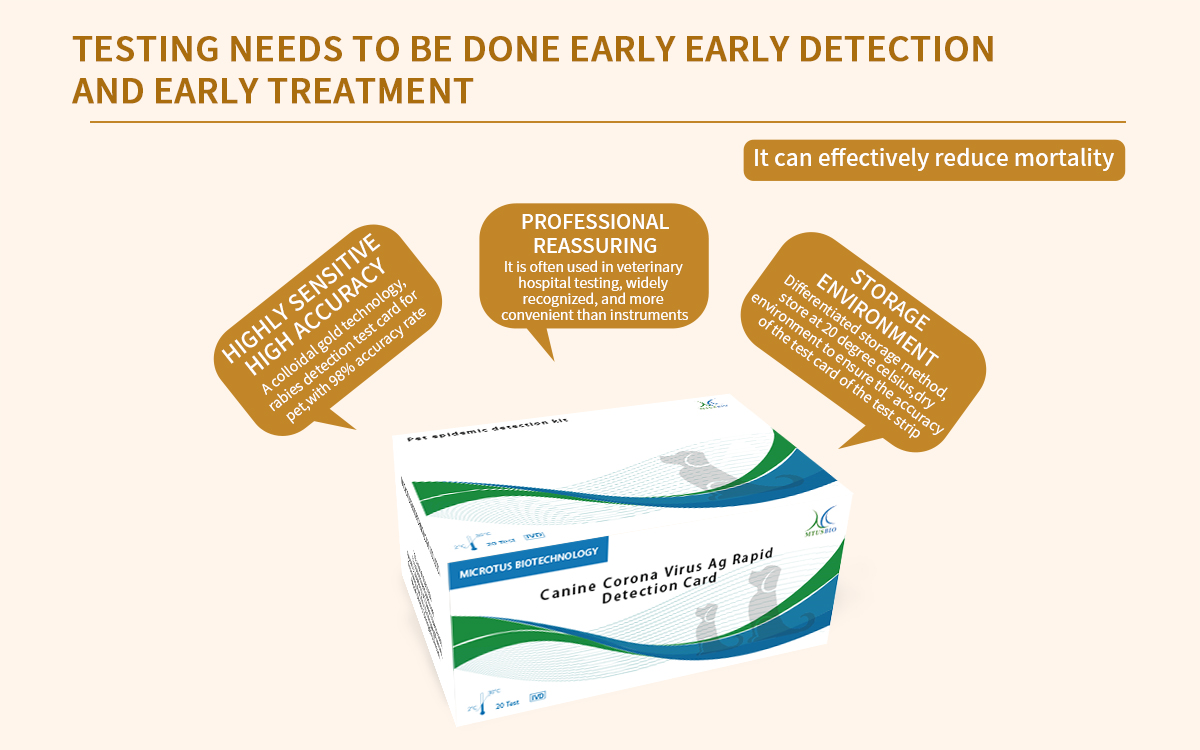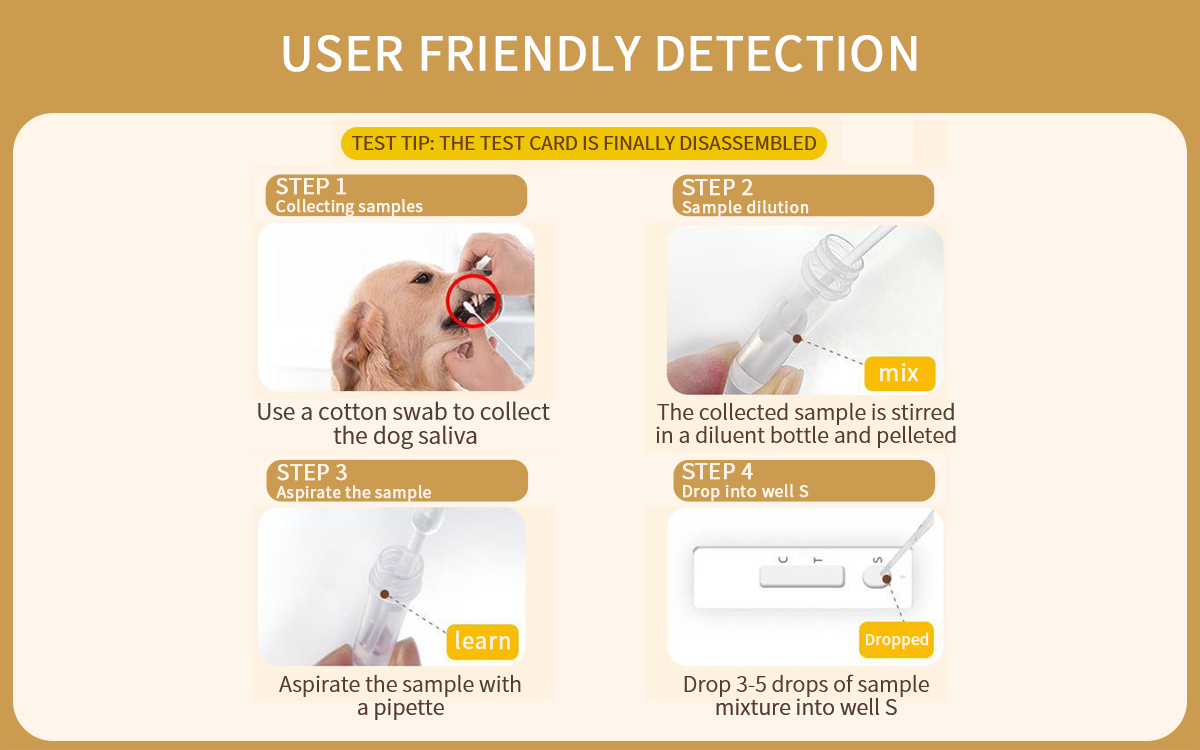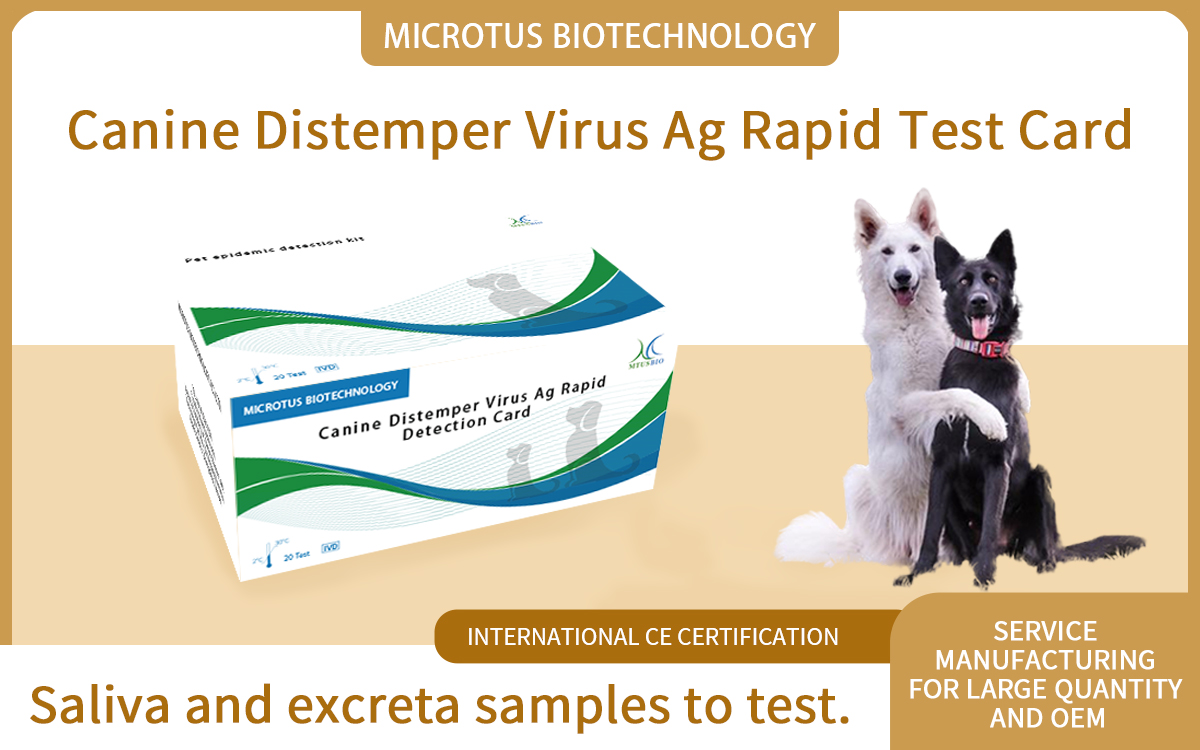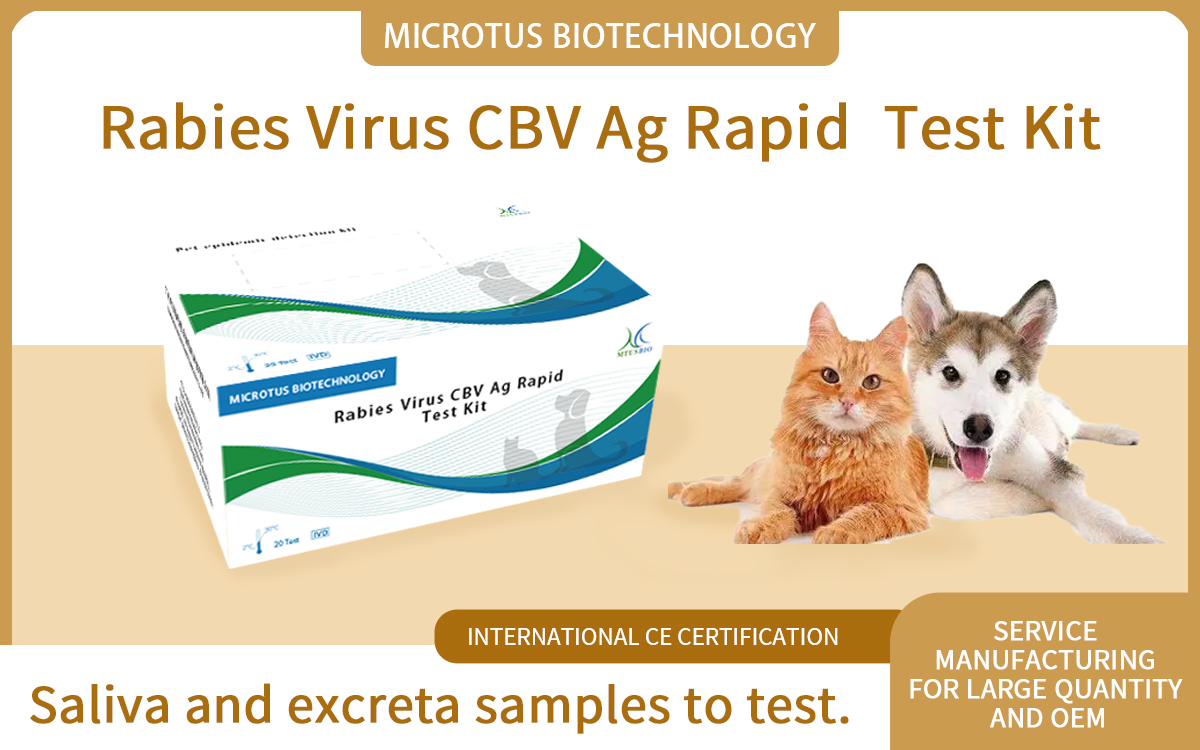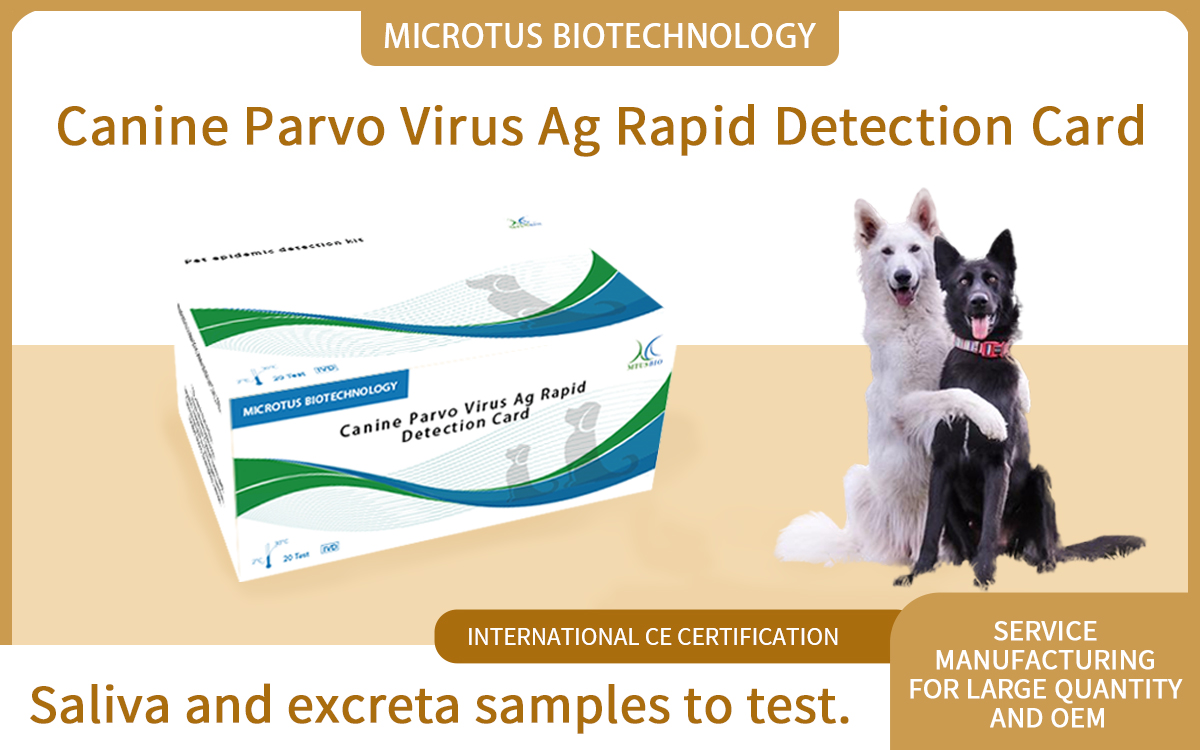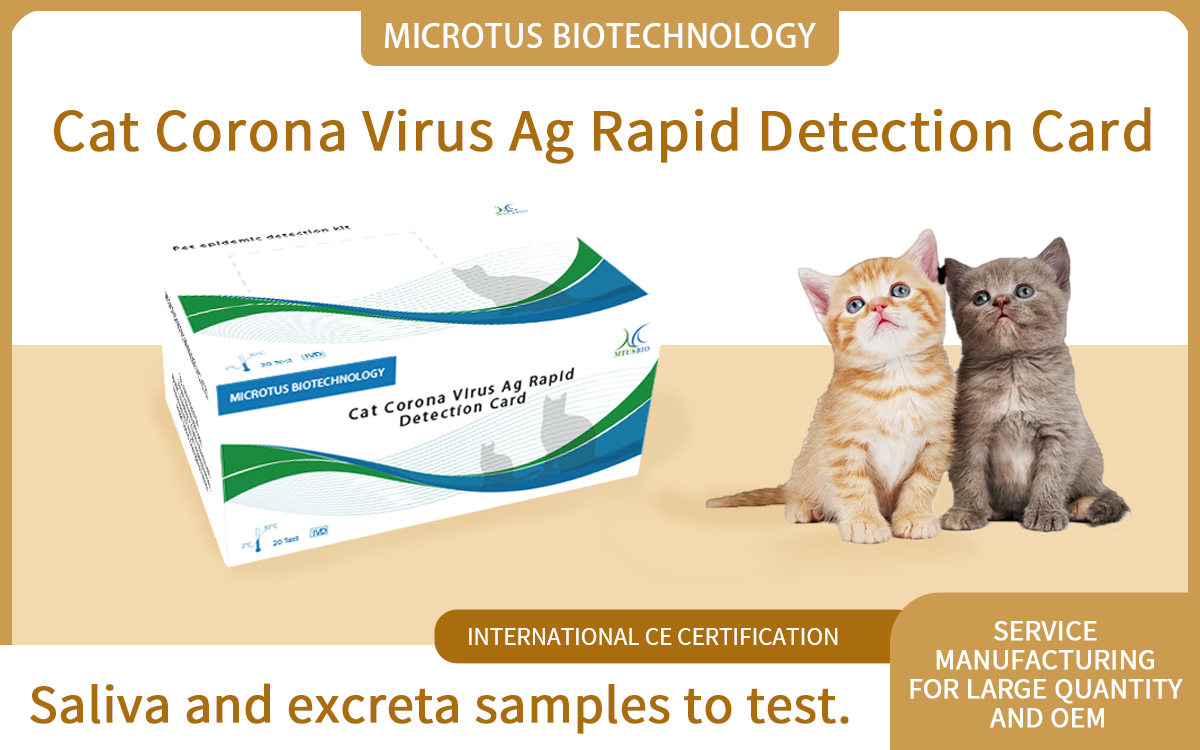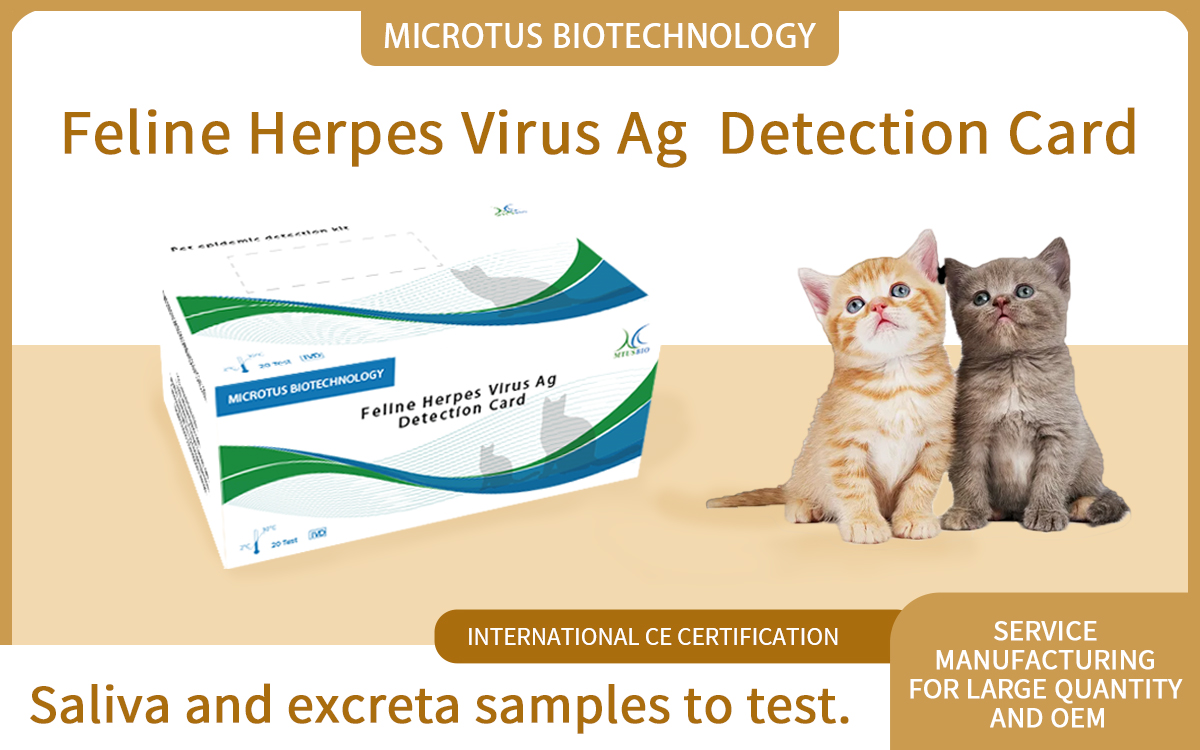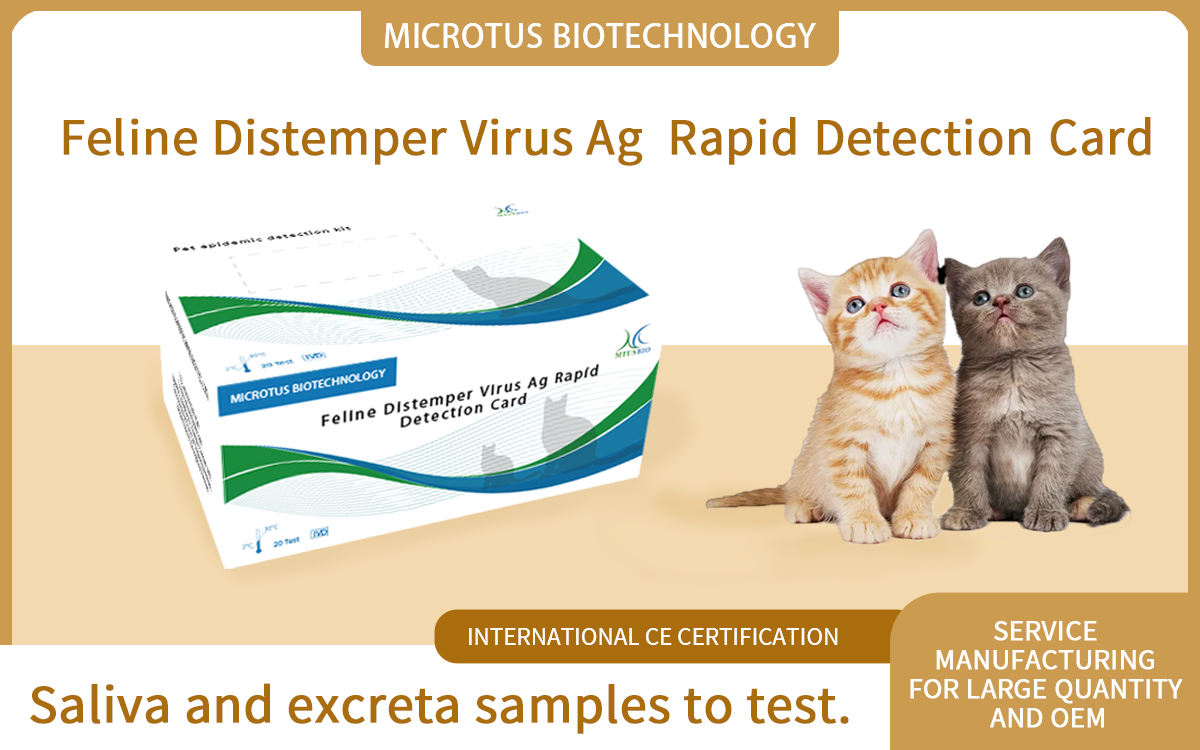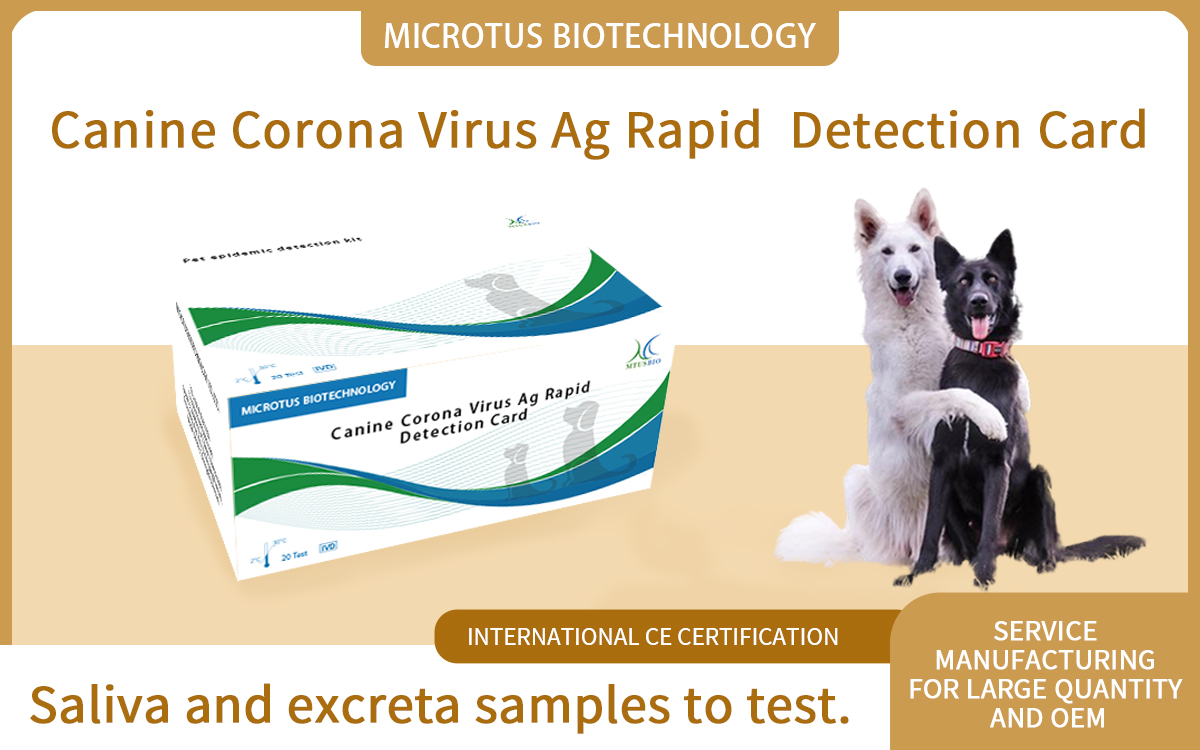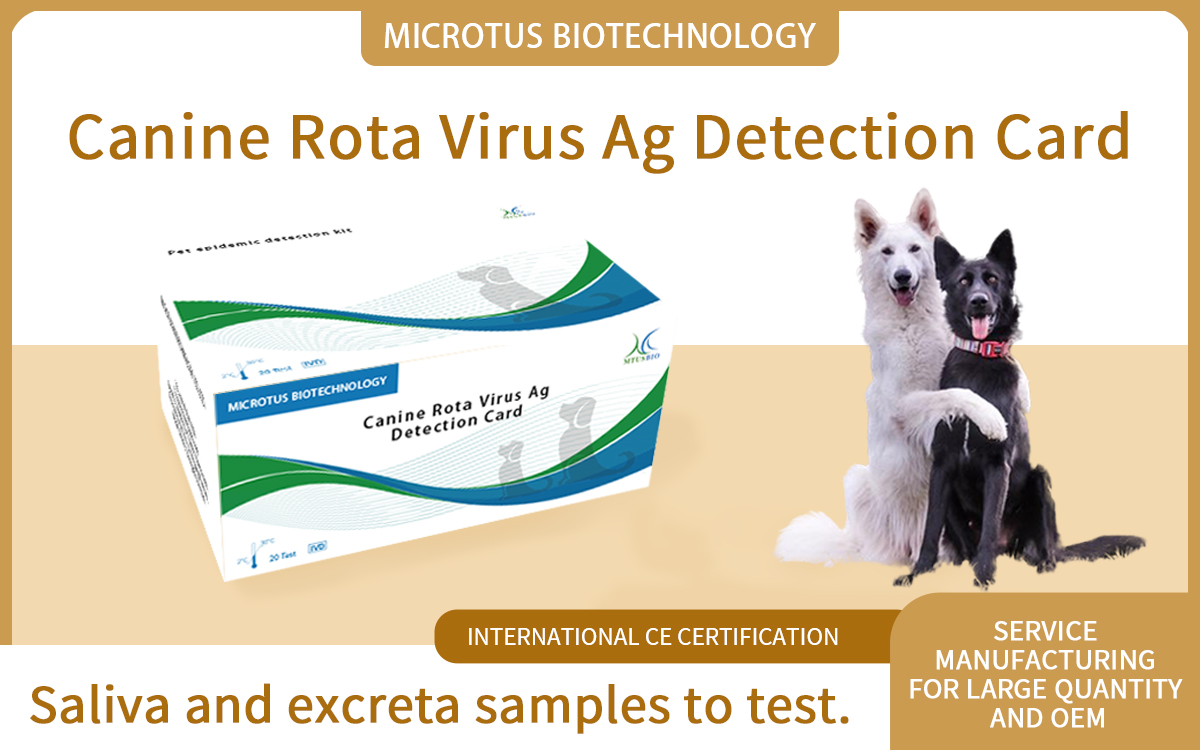Canine Corona Virus Ag Rapid Detection Card
Canine coronavirus(CCV) is a single-stranded RNA virusClinical symptoms such as diarrhea and vomiting mayappear after infection, and the symptoms are serious Thedegree is usually related to age, and the clinical symptomsof puppies after infection are better Young dogs are serious.and adult dogs hardly cause death. Although the dog crownThe virus is highly infectious, but its mortality is low. Thespread of the disease Sowing is mainly transmitted throughthe "fece-oral" route, and the contaminated ringEnvironment is the main source ofinfection. The incubationperiod of the disease is usually within 1 week.
[Principle]
Canine parvovirus antigen and canine coronavirus antigen test strips apply the principle of double antibody sandwich immunochromatography. During detection, the canine parvovirus antigen or canine coronavirus antigen in the sample is specifically labeled with colloidal gold during flow. The cloned antibodies bind to form a complex. When the sample flows through the T region of the NC membrane, the specific monoclonal antibody fixed on the NC membrane captures the complex and gradually aggregates into a visible T line. The unbound colloidal gold antibody flows through the C region and is captured. A visible C-line is formed. The C line indicates that the test strip is effective, and the T line indicates that the sample contains canine parvovirus antigen or canine coronavirus antigen.
[Kit composition]
No. | Name | 20T / box |
1. | test cards (including straws) | 20 |
2. | Sample dilution | 20bottles |
3. | Cotton swab | 20 sticks |
4. | instruction manual | 1 |
[Storage and expiry date] Store in a cool and dry place (2-30 ° C), valid for 24 months.
[Sample preparation]
After soaking the cotton swab with normal saline, swab the feces, rectum, vomit, and saliva. Immediately insert the cotton swab into the sample tube containing the diluent. Stir the cotton swab thoroughly until all the samples on the cotton swab are dissolved in the diluent. Place the cotton swab in the tube. The wall is squeezed out and discarded, and the sample solution is left to stand.
Note:
Excessive stool samples may lead to erroneous results (such as the occurrence of black bands, etc.), and can be diluted with the sample dilution solution before testing.
【experiment method】
1. Tear off the aluminum foil packaging bag of the test card, remove the test card, and place it on a flat, clean surface.
2. Pipette the prepared clear sample supernatant with a matching pipette, and slowly add 2-3 drops (about 60ul) into the sample well vertically and slowly.
3. Leave at room temperature for 5-10 minutes to judge the results. Results longer than 30 minutes are invalid.














